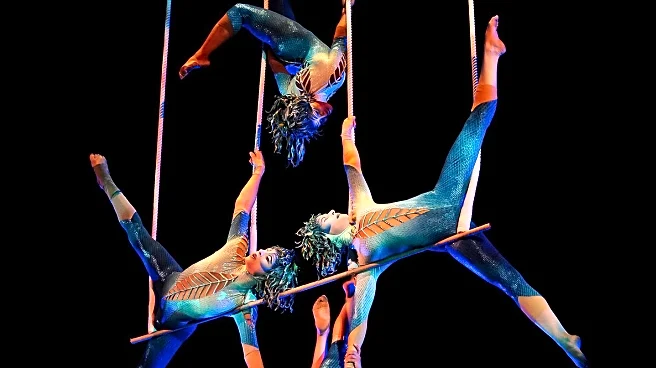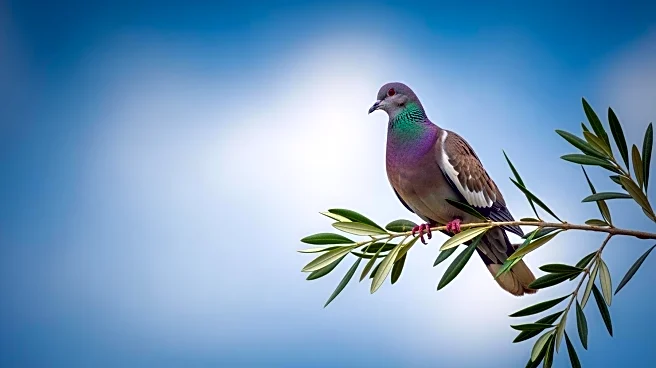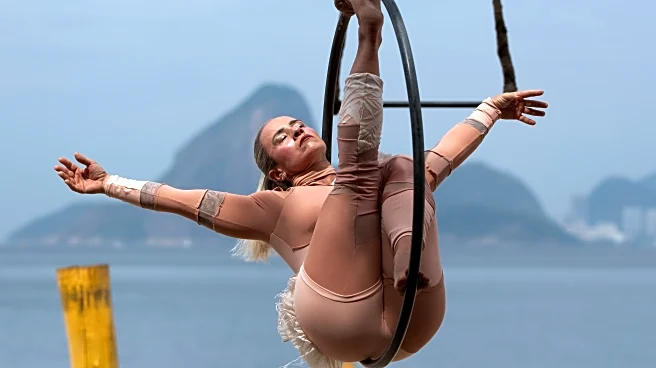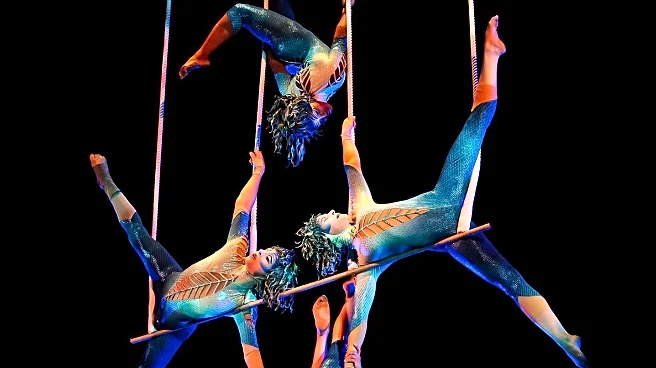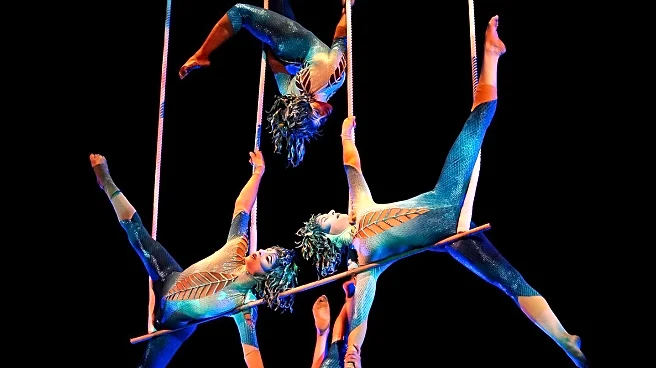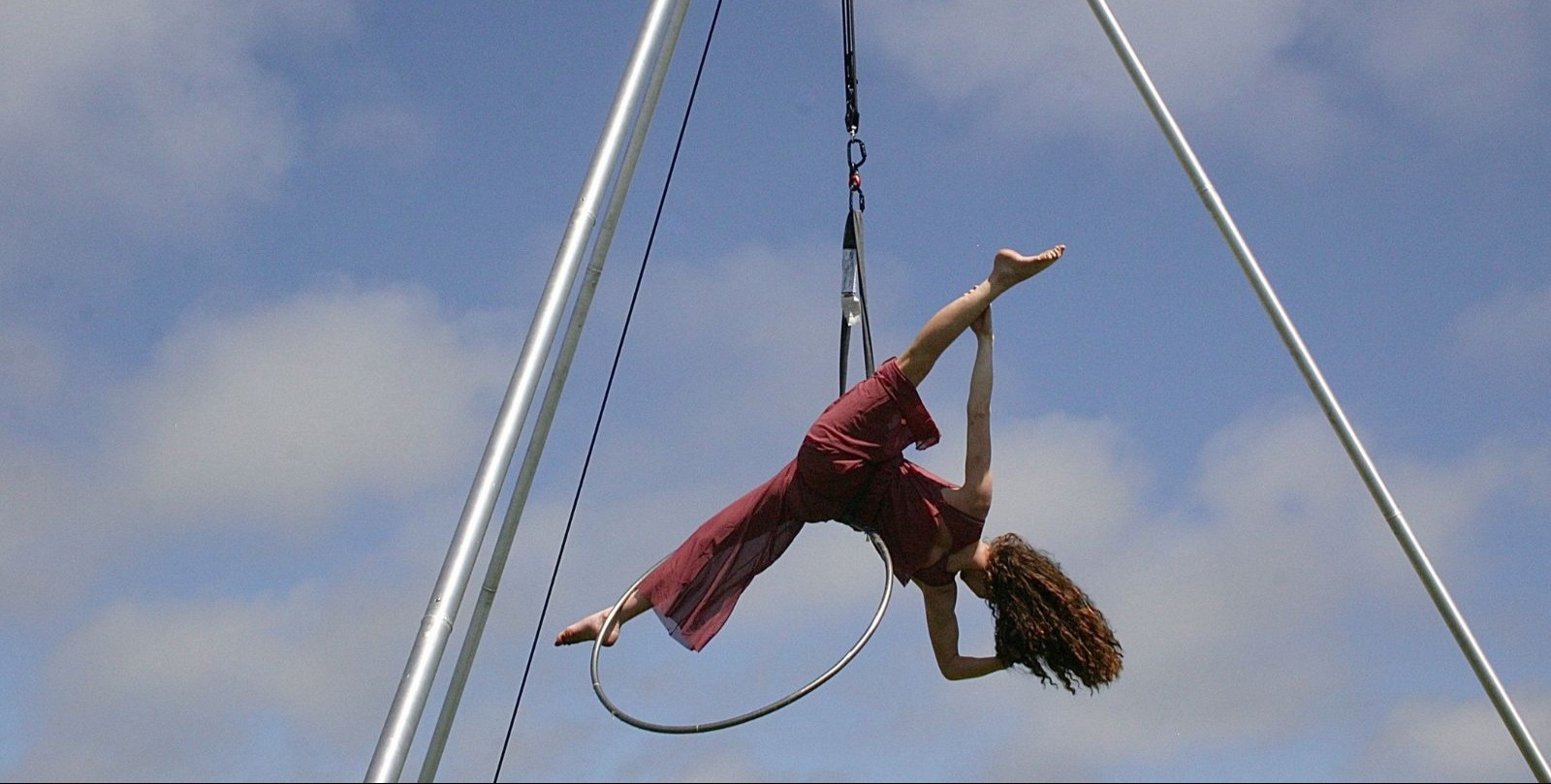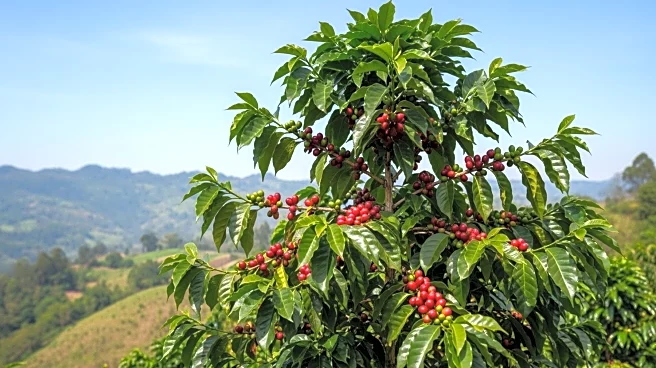What's Happening?
In Niteroi, Brazil, an aerial circus performance titled 'Alone we are petals, together we are roses' was held to spotlight the issue of violence against women. The performance, featuring six women and
two men, took place on a beach with Rio de Janeiro's iconic landmarks in the background. The show depicted a narrative of a woman overcoming violence and finding strength through solidarity with other women. The project, initiated by Juliana Berti Abduch in 2020, aims to address and combat various forms of violence against women. The performance was attended by approximately 100 people, who were drawn by the visually striking display involving aerial hoops, trapezes, and silks.
Why It's Important?
The performance is significant as it raises awareness about the pervasive issue of gender-based violence in Brazil, where more than one in three women have been victims of such violence in a year, according to a 2025 report by the Brazilian Forum on Public Safety. The show not only highlights the problem but also serves as a therapeutic outlet for the performers, many of whom have experienced violence themselves. By using art as a medium, the project seeks to empower women and promote unity in the fight against violence. The performance also underscores the ongoing challenges in women's rights, such as access to legal abortion services, which remain fraught with barriers despite being legally permitted in certain cases.
What's Next?
The aerial circus project is expected to continue its mission of raising awareness and providing healing through future performances. The initiative may inspire similar projects and discussions around gender-based violence, potentially influencing public policy and societal attitudes. As the project gains visibility, it could attract more participants and supporters, further amplifying its impact. The ongoing dialogue and artistic expression may contribute to a broader movement advocating for women's rights and safety in Brazil and beyond.
Beyond the Headlines
The use of performance art to address social issues like gender-based violence highlights the power of creative expression in driving social change. It offers a unique platform for survivors to reclaim their narratives and foster resilience. The project also reflects a growing trend of using art as a tool for activism, which can engage audiences in a more visceral and emotional way than traditional advocacy methods. This approach may inspire other artists and activists to explore similar avenues for raising awareness and effecting change.
